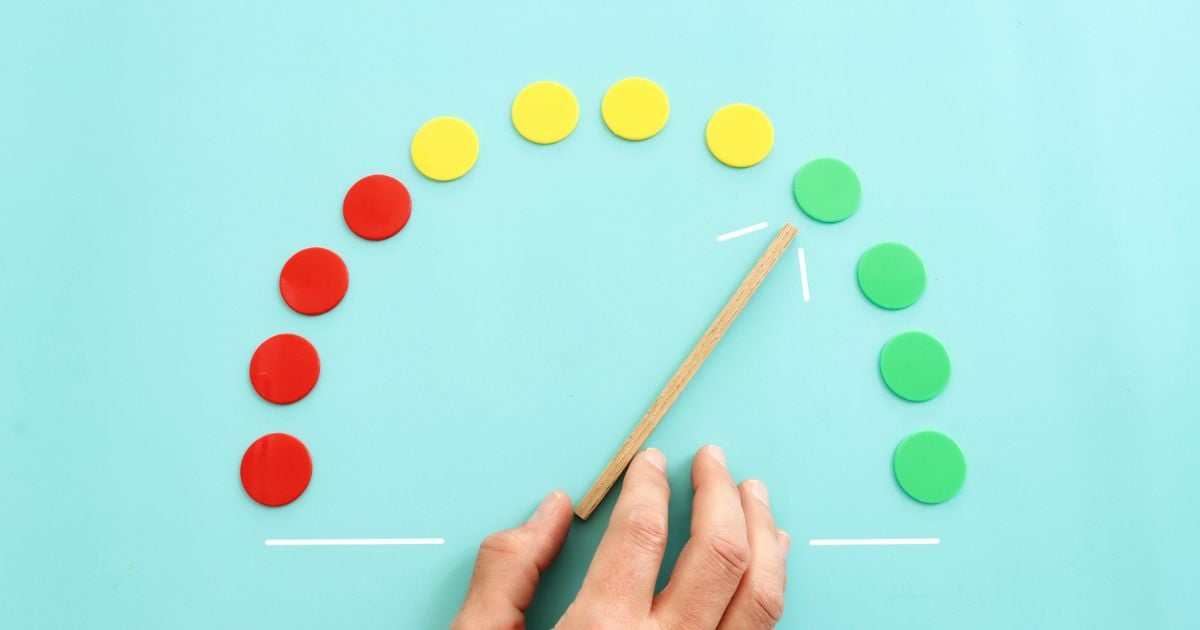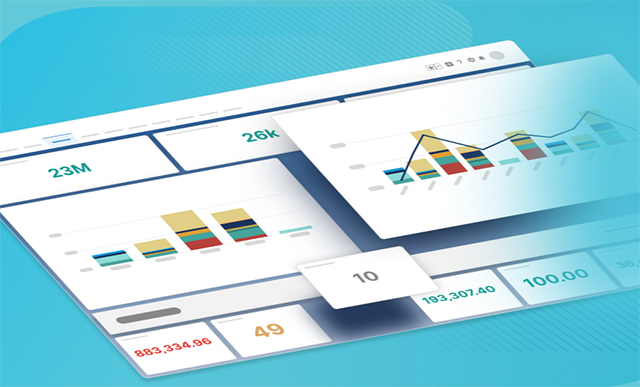Priced at $459, the Nothing Phone (3a) Pro is a solid value on paper and marks a step forward from last year’s Nothing Phone (2a) Plus, with longer battery life and better camera quality in a similarly eye-catching, transparent design. That said, you can only get it by enrolling in a beta program, and limited 5G network compatibility lessens its appeal in the US. For an Android phone with more robust 5G support, great battery life, excellent cameras, and AI, the $499 Google Pixel 8a is our Editors’ Choice in this price range. It’s also worth noting the Pixel 9a is arriving soon for the same price.
Design: A Bigger, Tougher Nothing Phone
The Nothing Phone (3a) Pro isn’t as easy to get as most phones in the US: You have to join the Nothing US Beta Program for a chance to buy it as long as supplies last. If you’re successful, the company says it typically takes five to seven days to receive the phone.
The (3a) Pro is a step up in size compared with its predecessor. It measures 6.43 by 3.05 by 0.35 inches (HWD) and weighs 7.37 ounces, while the Nothing (2a) Plus is 6.37 by 3.00 by 0.33 inches and 6.70 ounces. The Google Pixel 8a is more compact at 5.99 by 2.86 by 0.35 inches and 6.63 ounces.
(Credit: Iyaz Akhtar)
Nothing carries over its signature transparent design, but the (3a) Pro swaps out the previous generation’s polycarbonate back for Panda Glass, which offers improved durability and scratch resistance. The back panel provides a clear view of internal ribbon cables, screws, and textured plastic elements. An enormous camera module surrounded by aluminum dominates the upper portion of the phone. The front is also Panda Glass.
In terms of durability, the (3a) Pro is rated IP64, meaning it’s dust-tight and resistant to water splashes from any direction. That’s an improvement over the IP54-rated Nothing (2a) Plus, but it falls short of the Pixel 8a’s IP67 rating (and the Pixel 9a’s IP68).
(Credit: Iyaz Akhtar)
The volume controls are on the left edge, while the power button and a new Essential Key are on the right. The bottom edge has a USB-C port, SIM card tray, and down-firing speaker. The (3a) Pro supports both physical SIM cards and eSIM.
Nothing offers the (3a) Pro in black or gray. I tested the gray model, which is pictured in this review.
Glyph: Glowing Goodness
On the back, the (3a) Pro features three distinct lighted sections with 26 individual zones that make up the Glyph. The Nothing Glyph is a great differentiator for the company’s phones. It can act as a timer, music visualizer, or notification indicator. It looks cool, though I don’t find it particularly useful.
(Credit: Iyaz Akhtar)
In theory, the subtle lights can quickly convey information via their coded blinking, but you might find on-screen notifications to be less conspicuous. The Glyph can be turned off in Settings if you choose.
Display: Plenty Bright
The (3a) Pro has a 6.77-inch OLED display with a 2,392-by-1,080-pixel resolution, an adaptive refresh rate of up to 120Hz, and a maximum brightness of 3,000 nits when playing HDR content. The selfie camera is centered at the top of the display, and an under-display fingerprint sensor handles security.
Animations look smooth, and the screen responds quickly to touch input. Whether indoors or outdoors, the (3a) Pro is easy to see.
(Credit: Iyaz Akhtar)
For comparison, the Nothing Phone (2a) Plus has a 6.7-inch screen with a resolution of 2,412 by 1,084 pixels and a peak brightness of 1,300 nits, while the Pixel 8a has a smaller 6.1-inch panel with a similar resolution of 2,400 by 1,080 pixels and a peak brightness of 2,000 nits. Neither is as bright as the Nothing (3a) Pro.
The Essential Key: Not Quite Essential
The Essential Key, a new addition, sits just below the power button on the right side of the (3a) Pro. It features a glossy finish, making it easy to identify by touch and sight. Its positioning takes some getting used to since it sits beneath the power button.
(Credit: Iyaz Akhtar)
The Key has its own set of actions. A quick tap takes a screenshot that you can annotate while holding the button initiates a voice recording. Double-tapping the Essential Key opens Essential Space, an app that stores screenshots and voice memos with transcriptions. Note that regular screenshots do not appear in Essential Space, just those captured using the Essential Key. You can sort and categorize your clips into collections, and in the future, AI integration will help organize captured content automatically. You can opt into Nothing’s Early Access program to gain access to a preview of these capabilities.
Essential Space app (cia)
I found that Essential Space created an accurate to-do list from a voice recording about making pizza. However, the phone had trouble parsing an audio memo about planning a vacation, which resulted in a vague checklist.
Essential Space seems like a good concept, but its promise is not yet wholly realized.
Performance: Not a Class Leader
The (3a) Pro runs on the Qualcomm Snapdragon 7s Gen 3 processor. Compared with the Nothing Phone (2a)’s MediaTek Dimensity 7200 Pro, Nothing says the new chip is 33% faster and GPU performance is 11% better. The (3a) Pro comes with 12GB of RAM and 256GB of internal storage.
(Credit: Geekbench/PCMark/GFXBench/PCMag)
In Geekbench 6, which measures CPU Power, the (3a) Pro earned a single-core score of 1,179 and a multi-core score of 3,308. The (2a) Plus scored 1,202 and 2,608 on the same tests, respectively, while the Pixel 8a scored 1,545 and 4,208.
On the PCMark Work 3.0 test, which measures general mobile tasks, the Nothing Phone (3a) Pro reached 10,955. That’s lower than the Phone (2a) Plus’s 13,860 and the Pixel 8a’s 11,982.
To assess graphics performance, we use the GFXBench Aztec Ruins test. The phone managed 25 frames per second (fps), which is less than the Phone (2a) Plus (34fps) and the Pixel 8a (55fps).
(Credit: Iyaz Akhtar)
For real-world gaming performance, we test with the resource-intensive Genshin Impact. At the highest graphics settings and a frame rate of 60fps, the (3a) Pro handles everything smoothly. Animations are crisp and I didn’t see any slowdown or frame drops in a 20-minute gaming session. The phone’s back panel became warm but never hot.
The benchmarks generally show that the Phone (3a) Pro’s performance doesn’t greatly improve upon its predecessor. However, its real-world performance is strong enough for demanding apps without faltering.
Battery Life: Plenty Long
The phone’s 5,000mAh battery charges at up to 50W wired; it doesn’t support wireless charging. In our battery rundown test, in which we stream a 1080p video at full brightness, the Phone (3a) Pro lasted 12 hours and 45 minutes. That’s an improvement over the Phone (2a) Plus (11 hours and 20 minutes) and half an hour better than the Pixel 8a (12 hours and 15 minutes).
(Credit: Iyaz Akhtar)
Nothing doesn’t pack a charger in the box, but with a 50W adapter, the Phone (3a) Pro reached 31% in 15 minutes, 62% in 30 minutes, and 100% in 1 hour and 5 minutes.
Connectivity: Limited 5G, Fast Wi-Fi
The phone supports 5G (sub-6GHz and C-Band, but not mmWave), Wi-Fi 6, NFC, and Bluetooth 5.4 for connectivity. It can hold one physical SIM card and one eSIM.
I inserted a T-Mobile SIM card and received a carrier text saying the (3a) Pro is not fully compatible with its network and that data speeds might be limited. This is T-Mobile’s way of saying the phone doesn’t support all the right 5G spectrum bands for the best service.
Sure enough, on T-Mobile’s 5G+ network in New York City, the (3a) Pro reached maximum download and upload speeds of 51.7Mbps and 60.8Mbps, respectively. For comparison, a Google Pixel 9, which is fully compatible with T-Mobile’s 5G UC network, reached over triple the download speed at 174Mbps in the same location.
When connected to a Wi-Fi 6 access point, the Nothing reached peak speeds of 526Mbps down and 22.2Mbps up. The Pixel 9 hit 636Mbps down and 21.5Mbps up. When tested at the limits of my Wi-Fi network, both performed well. The (3a) Pro reached an impressive 552Mbps down and 22.7Mbps up, while the Pixel recorded 483Mbps down and 21.6Mbps up.
Audio: Loud and Clear
Call quality is good, and background noise rejection is excellent. In a test recording, my voice sounded clear and was easy to understand, even with loud music playing. The earpiece speaker reached 87.4dB with a decibel meter right on top of it, while the speakerphone hit 70.4dB with the meter positioned 6 inches away. Sounds around or above 70dB are easy to hear, so Nothing did well here.
Media audio plays through the earpiece speaker and the down-firing speaker on the bottom edge. The phone reached 99.5dB when playing Metallica’s “Enter Sandman,” which easily fills a small room. The lowest bass notes of The Knife’s “Silent Shout” were not audible, though. For a better audio experience, I recommend using a pair of Bluetooth headphones.
Cameras: Nothing’s Best Yet
The Phone (3a) Pro is the first phone from Nothing that we’d say has a “good” camera. Good is relative here. The cameras of its older phones have been below average in terms of quality. The (3a) Pro’s camera is improved enough over its predecessors that we actually recommend using it.
It features a 50MP main camera at f/1.88 with optical image stabilization (OIS), an 8MP ultra-wide camera at f/2.2 with a 120-degree field of view, and a 50MP 3x periscope telephoto camera at f/2.55. It supports 6x lossless zoom, 60x ultra zoom, and a dedicated macro mode.
The main camera captures good but slightly oversaturated color, while ultra-wide shots are overly brightened. By default, the Phone (3a) Pro uses pixel binning to create 12MP images, though you can shoot at the full 50MP resolution by changing the settings. The improvement here is better clarity throughout.
Main camera, 12MP (Credit: Iyaz Akhtar)
Main camera, 50MP (Credit: Iyaz Akhtar)
Ultra-wide camera, 8MP (Credit: Iyaz Akhtar)
The 3x telephoto’s palette matches the main shooter with good contrast and realistic color. The company has done some good work here, improving its color science. Nothing claims that the (3a) Pro can produce lossless zoom at up to 6x, which seems pretty on point. The 6x lossless zoom looks good, though details break down sooner than they would with optical zoom.
Telephoto camera, 3x (Credit: Iyaz Akhtar)
The 60x digital zoom produces slightly better results than simply cropping a 50MP image would. Overall, it has less noise but a slightly painted look.
Left to right: 60x zoom, 50MP zoomed and cropped (Credit: Iyaz Akhtar)
The 50MP selfie camera captures colors and details consistent with the main shooter. Portrait mode is somewhat aggressive. It often blurs my glasses instead of correctly separating them from the background, but that’s consistent with other phones at this price.
Left to right: Selfie, portrait (Credit: Iyaz Akhtar)
Both front and rear cameras capture 4K video at 30fps with good detail and realistic color. Front-facing video is shaky when moving around, while the rear camera’s OIS does a good job of keeping things steady. It won’t replace a gimbal, but it will do in a pinch.
Software: Intentionally Different
The (3a) Pro ships with Android 15 and Nothing OS 3.1 atop it. This software layer brings the company’s Essential Space, monochromatic icon packs, and a Smart App Drawer (in beta), which automatically categorizes apps in a way similar to iOS. The Smart App Drawer works OK, but miscategorized items cannot be moved. This could change once the feature leaves its beta stage.
The stark icons and widgets require you to more actively choose what you interact with. This is by design, as Nothing aims for mindful phone usage. If you don’t like Nothing’s aesthetic, you can opt for a more traditional Android look.
App Drawer (Credit: Nothing)
Nothing promises three years of OS updates and four years of security fixes, matching the Phone (2a) Plus. The Pixel 8a, on the other hand, offers seven years of OS updates, feature drops, and security patches.
Verdict: Something Good for Nothing Fans
The Nothing Phone (3a) Pro is a creatively designed phone that checks a lot of boxes. It has a slick look, long battery life, and improved cameras at a competitive price. Unfortunately, its lack of full US 5G support limits its appeal, and its performance is fine but not class-leading. The Google Pixel 8a is a better value thanks to its stronger connectivity and Google’s extended support, which is why it remains our Editors’ Choice. If you can wait, the Pixel 9a looks to be even better, though it doesn’t go on sale until April.
The Bottom Line
The Nothing Phone (3a) Pro is a solid midrange Android handset with a distinctive design for less than $500, but limited 5G support and availability hold it back.
Like What You’re Reading?
This newsletter may contain advertising, deals, or affiliate links.
By clicking the button, you confirm you are 16+ and agree to our
Terms of Use and
Privacy Policy.
You may unsubscribe from the newsletters at any time.

About Iyaz Akhtar
Mobile Analyst



























